#piloting service
Text
Genshin Impact Piloting Service Now Open!
Hello Travelers!
Allow me to introduce myself. I’m wyn, and I have been playing Genshin Impact since 2020. Today, I open my piloting service to my fellow travelers who are too busy or burned-out to play the game, but don’t wanna miss out!
Here are my OFFERS as well as TERMS AND CONDITIONS, which may be updated in the future:


I. MAINTENANCE


II. EXPLORATION, QUESTS, EVENTS & SPIRAL ABYSS


III. OCULI & ENEMY DROPS


IV. RESIN BURN, THE CATCH, WAYPOINT UNLOCKING, CHESTS & ORES


V. LOCAL SPECIALTIES & WOOD


PLACING ORDERS:
You can place your orders by:
sending a private message here on Tumblr, Twitter, or Discord (wyn#4606);
filling out the order form.
NOTES:
You'll notice that there isn't a space in the form for your Genshin login credentials. This is for security reasons, and I made it so that I will have access to your information ONLY AFTER your order has been processed.
Remember to wait for CONFIRMATION of your order before paying. I have a "no refunds or cancellations once paid" policy. After placing your orders, we will proceed to payment processing through private message.
GENSHIN PILOTING SERVICE LINKS:
Access all the information about my piloting service in one place:
Tumblr: Genshin Piloting Service (view in browser: calx-morwyn.tumblr.com/genshinpilotingservice)
Carrd: wyn's service
#genshin tumblr#genshin impact#genshin impact pilot#genshin piloting service#piloting service#teyvat#genshin impact community#genshin community#genshin impact piloting service#morwyn plays#morwyn pilots#kokomi#kokomi main#video games#games#entertainment#business#burnout#game burnout#genshin burnout#carrd stuff#genshin twitter
28 notes
·
View notes
Text
House M.D. but it's when a character says the name of the episode
#house md#prince's talk tag#flashing#repitition#so as i was watching this show i noticed they'd say the episode title in the episode#so i wanted to see how many times they did it#the people on livejournal who made transcripts of the episodes are my saviors and without them this would of been so much harder to do#thank you all for your service and i hope wherever you all are you're having a great day#sometimes they would use a variation of the word like in the episode poison they would say 'poisoned' or 'poisoning'#i did not include those instances#there was an instance in 'merry little christmas' where they do play the song in the show#but since ella fitzgerald was not a character in the show i did not include it#where as in the episode 'joy to the world' the students are singing it in the concert so i did include that#i apologize for the tonal whiplash when you get to that part but it did make me laugh#one of the times kutner says 'locked in' is overshadowed by the POTW's voice over but i assure you he says it and thats why its in there#out of the main characters from the one who said the title the most to least are#House > Foreman > Wilson > Chase > Cuddy > Adams > Cameron and Taub > Kutner > Thirteen and Park#this took a bit to do lolol its probably been done already but i wanted my own#there is a chance im missing some on technicalities but idc. im fine with this#there are two more i wanna do but with a character saying another character's name but ill do that some other time#EDIT: When I was making this video I was unaware that the Pilot episode went by two names: 'Pilot' and 'Everybody Lies'#Basically everywhere I looked the first episode was only referred to by 'Pilot'#which I found weird bc i remember seeing somewhere that the last episode was paired with the first episode in terms of title#but i couldn't find hard proof so I decided to leave it out at the time#well i checked again last night and yea the pilot IS also called Everybody Lies so I updated the video#I also think it goes well with the fact that House does say 'Everybody Dies' in the finale so another reason to fix it#AND he says it without Wilson while he and Wilson say the title of the pilot sooooo yea hehehehehe
293 notes
·
View notes
Text
Guys, his face when he’s teasing her… 🫣
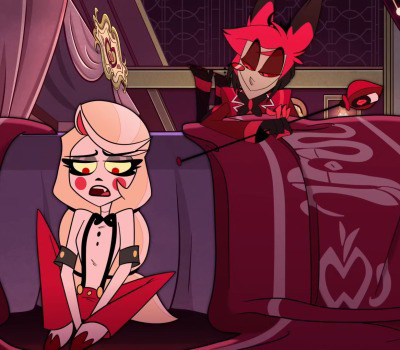



#charlastor#charlie x alastor#chalastor#there interactions so far have been chiefs kiss no complaints#this is that good charlastor ish I’ve been feening for since#the pilot#radiobelle#I know this is fan service at best and there’s no way in hell they’ll be canon that’s what maladaptive dreaming is for lol
326 notes
·
View notes
Text
The Women's Airforce Service Pilots (WASP): Soaring Through Gender Barriers 🛩🐝
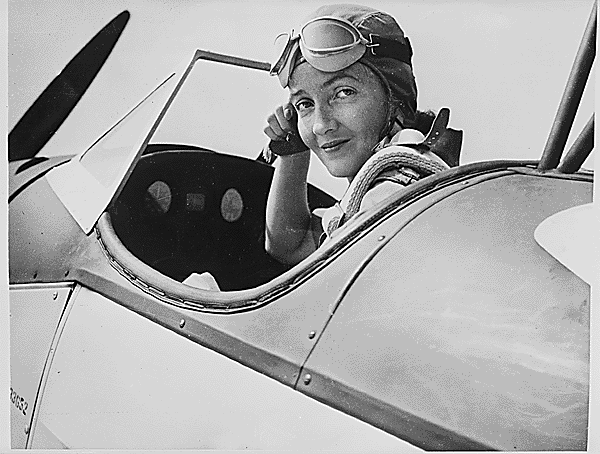
During World War II, while the world battled on various fronts, a quieter revolution took flight in the United States. The Women's Airforce Service Pilots, or WASP, were a pioneering group of female aviators who defied traditional gender norms, proving that women could excel in roles historically reserved for men.
Origins of the WASP
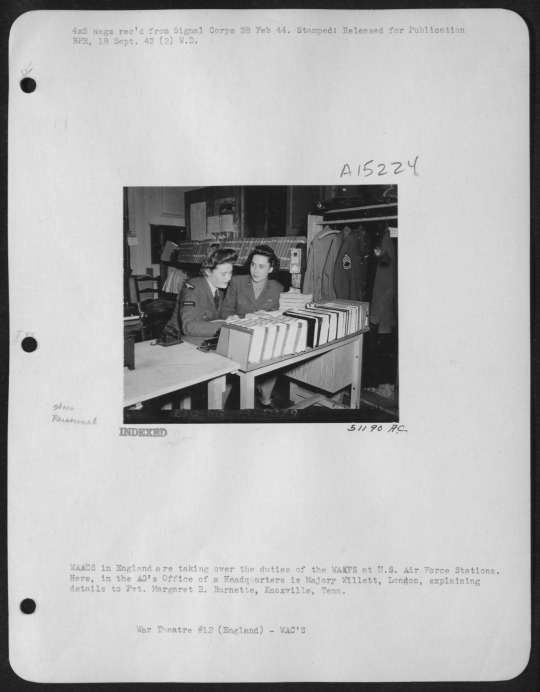
With many American men serving overseas, the country faced a need to tap into underutilized domestic resources. The WASP program, initiated in 1943, merged two existing women's flying programs: the Women's Flying Training Detachment (WFTD) and the Women's Auxiliary Ferrying Squadron (WAFS). These women, under the guidance of aviators like Jacqueline Cochran and Nancy Love, would play a critical role in the war effort.
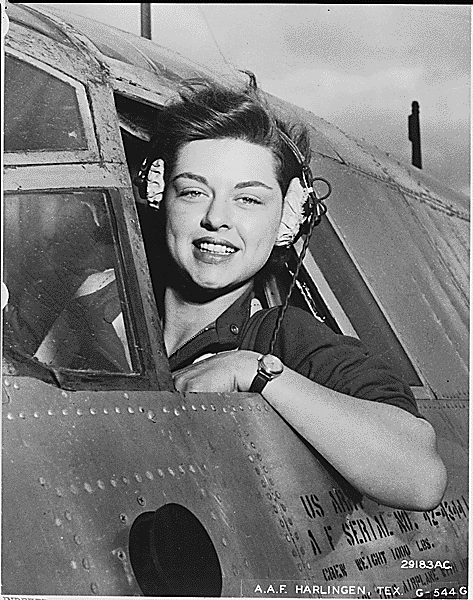
Duties and Contributions
The WASPs were trained pilots who contributed in non-combat roles. They ferried military aircraft across the country, tested planes, instructed male pilots, and even towed targets for live anti-aircraft artillery practice. They fulfilled the non-combat roles formerly occupied by male pilots, so more male pilots were available for combat roles. Women were not allowed to fly combat missions until [many years later, in 1993.. By the end of the war, WASPs had flown every type of military aircraft, logged over 60 million miles, and transported nearly 12,650 aircraft of 78 different types.
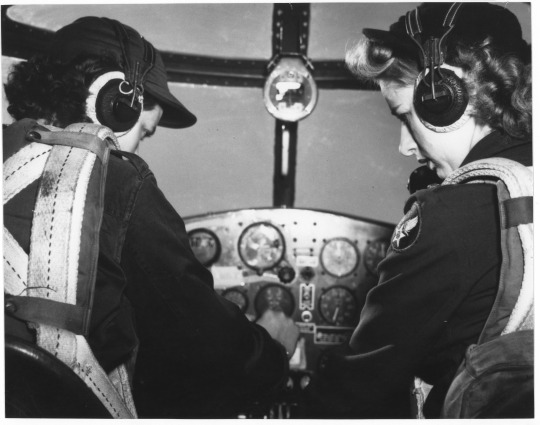
Challenges and Gender Biases
Despite their significant contributions, WASPs constantly faced skepticism and discrimination. They weren’t considered members of the military but were seen as civil service employees. They had to pay for their own uniforms, lodging, and sometimes even their way home after the end of their service. If a WASP pilot died during service, her burial costs fell on her family or fellow pilots.
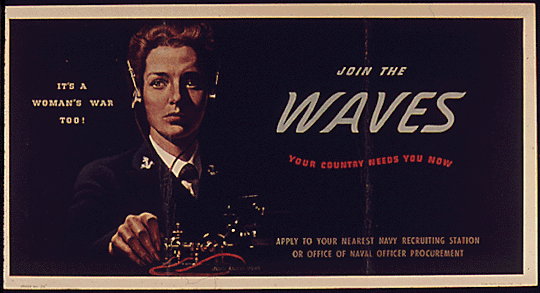
Recognition and Legacy
In 1977, after years of advocacy by WASP veterans, President Jimmy Carter signed legislation granting WASP pilots veteran status. Later, in 2009, they were awarded the Congressional Gold Medal for their service, sacrifice, and pioneering spirit. The legacy of the WASP program not only paved the way for women's integration into the U.S. Air Force but also demonstrated the capabilities of women in high-pressure, technical roles.
230 notes
·
View notes
Text

This came from a randomized AU prompt involving flight attendants and characters meeting in a coffee shop - I went with the main four meeting in an off-brand airport starbucks (plus melody because I have a blorbo agenda here :P), but got thoroughly sidetracked drawing melody + pika as flight attendants haha
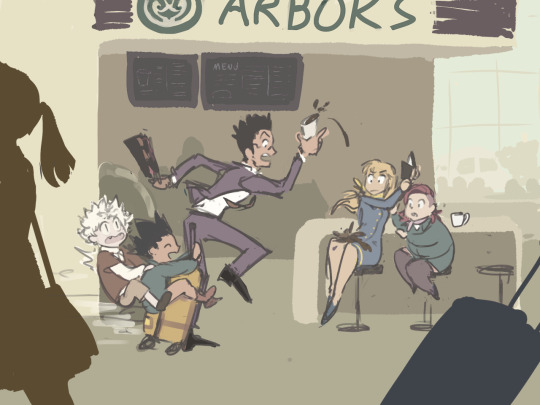
(gon & killua meet in the airport and quickly hit it off, but while goofing off they accidentally bowl over leorio who really needed that coffee after 18 hours in transit back to medical school
kurapika is about ready to murder leorio - not for the coffee stain, but because he didn't apologize sincerely enough - but then gon jumps in very politely and says it was his fault and he's very sorry. kurapika decides to let it go :)
some handwavey logic later and they all end up on the same plane. kurapika gives gon and killua extra bags of the little pretzels and nearly kills leorio again for trying to flirt with melody. they all have a feeling it's not the last time they'll cross paths 🙂)
#hunter x hunter#hxh#melody hxh#senritsu#i got very self-indulgent with this au lol (/ ~ \)#side cut melody is lowkey my pre-curse headcanon for her#went from having the side half of her hair to the bottom half :'D#also in this au her scars are burn scars#i went with transfem kurapika here (i think that's the right word? like trans and feminine but not necessarily binary female)#kurapika is kind of schrödinger's gender headcanon to me (as in‚ all of them at once unless i need to choose for a given scenario)#self-indulgently made her a gal here but that's not to say canon krpk wouldn't absolutely wear this outfit too (he 100% would)#...i think i'm now deep enough in the wall of tags to admit. that in my heart this is a kurasen au#kurapika took the job to (somehow) gain intel on this universe's version of the kurta massacre and#melody helps her keep her sanity in customer service hell (and vice-versa tbh)#(nostrade owns the airline. i have a terrible feeling that the neon of this au is out there piloting passenger jets on instinct alone)
163 notes
·
View notes
Note
Don't watch then? If you're going to be disappointed no matter what then don't watch
I think some people don't realize that Helluva and Hazbin are capable of good writing, that they are capable of amazing animation, good songs, and ideas. They HAVE that stuff, they've done it before, and continue to do it, not as often as before, but there are diamonds in the rough.
It's the execution and vast changes in direction that fall flat, that are not good because the direction is lost, interactions become contradictory, the story doesn't seem as complex... and from a fandom standpoint, a lot of people within a fandom write fics, comics, or draw art based off things they wanted to see more of in the show. AUs to twist a direction, explore different arcs, expand a character, showcase a potential relationship- all of which the show did not. Whether a show is super good or terribly horrible, out of hype or spite, it is still an inspiration.
#im here for alastor and charlie man#i might get breadcrumbs but i miss my happy obsession with Hazbin Hotel#im dropping Helluva Boss after S2 finalizes#i heard some things i want to confirm myself are true- because those things in particular if unchanged will make me lose 100% interest#where as Hazbin Hotel may or may not be influenced by higher up the food chain kind of people#its got specific funding- specific episodes- its an officially released streaming service exclusive show#and good or bad it will expand on characters outside of a 30 min pilot#which will finally give the fandom new material to work with#and i wish to one day write a fic rewriting Helluva and maybe even Hazbin one day if i find the time and passion again#so if i can see what directions the show initially were going in#and steer them back onto those paths- then i gotta see the show to know#hazbin hotel critical
67 notes
·
View notes
Text
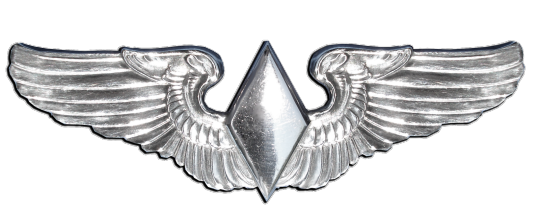
Insigne des Women Airforce Service Pilots (WASP)

Betty Gillies des Women Airforce Service Pilots (WASP) – 1943
©United States Air Force – 020927-O-9999A-004
Betty Gillies a été la première femme pilote à être «certifiée en vol» et a intégrer le Women's Auxiliary Ferring Squadron, plus tard le Women Airforce Service Pilots.
#WWII#united states army air forces#usaaf#unités#units#women airforce service pilots#wasp#femmes dans la guerre#women in war#betty gillies#1943
17 notes
·
View notes
Text
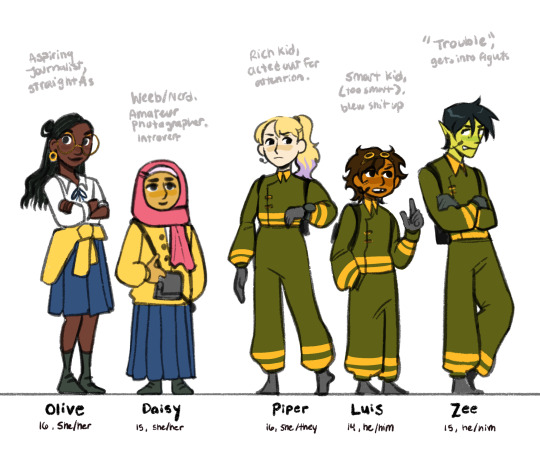
Oc lineup… it’s self care to redesign your middle school characters
#my art#strawberridraws#oc#ocs#my ocs#oc art#yipee#three on the right r doing community service hours (govt mandated)#except in space piloting a garbage truck in like a dead end part of the galaxy lol#the two on the left r from OG earth and get swept up in their adventures when they r on a field trip
14 notes
·
View notes
Text
In case I needed more reasons to love him:
[John] Egan got back to the USA and stayed on in the Air Force. Late in 1945 he married Josephine Pitz who had been a pilot with WASP assigned to New Castle AFB ferrying B-17s, PT-19s and C-47s.
-American Air Museum in Britain
!! He married a fellow pilot!
Anyway, you can see a bunch of pictures of Jo, as she was labeled in some photographs, during her training at Sweetwater Field and her wartime service here at the Women's Air Force Service Pilots Official Archive at Texas Women's University.
(so where's HER miniseries, Hanks?)
#masters of the air#women in wartime#women in world war two aviation#original girl gang#john egan#women's air service pilots
20 notes
·
View notes
Text
Rolling around thoughts of BT (or Cooper) being like. Half aware that theyre... not in a game, but that this isn't the first time they've done this. Not quite Sans Undertale behavior, but just... BT somehow comprehending that time has just gone back several seconds. Offering Cooper words or encouragement. Or Cooper knowing that an IMC grunt is about to come out a specific door without knowing how or why he knows. Something tells him he's been here enough times, once you go through those doors you need to duck and cover or else a Stalker is going to shoot you. It's real, for them, but something is taking them back, giving them a second try, a third try, however many tries it takes to get it right.
#Titanfall 2#Jack Cooper#BT 7274#BT-7274#Tf 2#Yeah I'm turning my weird brain towards Titanfall now#Maybe it's something they're not really aware of until after effect and cause and the time warp shenanigans#Cooper assumes his senses are getting better (and he's not wrong)#(he IS becoming a better pilot. He needs less redos the further he goes.)#BT might think something is wrong with his censors or calibration and makes a note for the next time he gets a service done#And it's weird because in the moments they WANT to turn back (BT getting grabbed or Viper's attack or the Draconis crashing)#They can't. They're still hurtling full tilt towards an end that they cannot stop#BT always sacrifices himself for the militia. He always sacrifices himself for Cooper. (He always returns on the helmet)#(you can take that from my cold dead hands)#But they get forgiven for their mistakes enough that they save the world#Because the world NEEDED to be saved#I am rolling this around in my head a lot we will see if it makes an appearance or not
56 notes
·
View notes
Text
This Chinese American Aviatrix Overcame Racism to Fly for the U.S. During World War II
A second-generation immigrant, Hazel Ying Lee was the first Chinese American woman to receive her pilot’s license
by Susan Tate Ankeny - Smithsonian magazine, April 23, 2024

Hazel Ying Lee (right) and fellow pilot Virginia Wong (left). Courtesy of the Museum of Chinese in America, New York City
Hazel Ying Lee circled the biplane, looking for anything suspicious. Missing something on a precheck could cost you your life. She checked the engine and confirmed that no oil had collected in its lower cylinder.
Starting a Fleet biplane involved choreography. Lee grasped the propeller with one hand and pulled it backward. “Just walk it through. You don’t need to use force,” her instructor, Al Greenwood, yelled from the cockpit. She repeated the process four times; each time, she heard the click that told her she’d done it correctly. Then, with both hands on the propeller, she raised her left leg forward. Swinging it behind her for leverage, she pulled, and the unique thumping that identified the Kinner engine began.
After climbing onto the wing and into the cockpit, Lee inspected the instrument panel, starting with the fuel. The tank held close to three hours of fuel when full. If a car ran out of gas or had engine trouble, the driver could pull to the roadside. In flight, the best you could hope for was to find a good field, and quickly.
As 19-year-old Lee performed her preflight check in July 1932, Greenwood’s other training biplane, calledthe Student Prince, taxied down the runway, piloted by one of the Chinese Flying Club of Portland boys earning solo hours. Founded in 1931, Greenwood’s school trained Chinese American pilots to go to China and help defend against the invading Japanese.
These young men would become a vital part of Generalissimo Chiang Kai-shek’s stand against the invasion. As the head of China’s Nationalist government, Chiang and his party were trying to establish control in a nation divided among revolutionists, nationalists, Indigenous warlords, and a developing communist army and government. Now, Japan seemed determined to take China’s resources. Many Chinese Americans supported Chiang and believed he would help China emerge from years of strife and discord.
China’s fledgling air force, with barracks and hangars still being constructed in the north, was easily defeated by the Imperial Japanese Army Air Force. The Chinese needed pilots. Delegates traveled to the United States to scout out flying schools that could teach young Chinese American pilots to fly for China. Across the country, branches of the Chinese Consolidated Benevolent Association (CCBA), a group made up of local merchants and businessmen, agreed to help raise funds to train the young men.
youtube
The association was established in 1882 with the purpose of aiding and protecting Chinese Americans by providing assistance with housing, jobs and other issues that arose. Portland residents Chan Lam and Ting Lee made impassioned speeches to raise money for an aviation school, ultimately raising enough money to sponsor 36 local students. Chinese flight schools opened not only in Portland but also in Boston, San Francisco, Los Angeles and other cities across the country. In total, around 200 Chinese American pilots would undergo training at these schools before joining China’s defense against Japan. Before a student was accepted into the program, he had to pledge his life to China, to the interests of China and to Chinese aviation. The pledge to die for China would take precedence over any personal relationships that might develop.
‗‗‗‗‗‗‗‗‗‗‗‗‗‗‗‗‗‗‗‗‗‗‗‗‗‗‗‗‗‗‗‗‗‗‗‗‗‗‗‗‗‗‗‗‗‗‗‗‗‗‗‗‗‗‗‗
Greenwood had purchased the Prince exclusively for the students in his Chinese flying school. He was essentially running two businesses simultaneously. With the new school under his direction, most of his time was spent training young men for combat in China, but he continued to give private flying lessons to students like Lee.
Greenwood’s first class of 15 boys quickly became idols to Lee. For as many hours as she could spare, she watched them practice. They treated her like a kid sister, though all of them were about the same age, and good-naturedly tolerated her enthusiastic antics and questions. She was fun to have around, laughing and playing tricks on them, with a wide smile and deep-voiced wisecracks.

A 1943 photograph of Lee, then serving in the WASPs. Courtesy of Texas Woman's University Collection

Lee stands next to the Student Prince in 1932. Public domain via Wikimedia Commons
Lee had kept the photo of the first class that appeared in the Oregonian newspaper in January 1931. Looking like a motley crew of street urchins, the young men posed in front of the Prince, uncertain of what they were in for before Greenwood began his process of transforming them into pilots bound for war.
Lee had never been among others who shared her passion for aviation. Flying was all that Greenwood’s students talked about, and they knew as much about airplanes—and sometimes more—than experienced pilots. It was practice that they needed, practice flying. And Greenwood would provide it.
The “boys,” as Greenwood called them, proved to be able students, a little heavy on the control stick at first, but never lacking courage or a willingness to try anything. Training required ten hours of primary work and ten hours of advanced aerobatics from each student—an enormous task for one instructor. Other pilots were hired to provide instruction to the students.

Lee (in white) attends an air show in Shanghai in 1936. Public domain
Greenwood peppered his instruction with stories of his exploits, like one about his narrowest escape, to demonstrate the deadly consequences of fear. While practicing spins with a student, he’d turned the plane over at 7,000 feet and let it spin for about 5,000 feet. The student grabbed the stick, panicking, and, as a magazine article about Greenwood described it, “began to do things, all of which were wrong,” while using up nearly every one of the remaining 2,000 feet before Greenwood finally regained control—just before the wheels hit the tips of the grass. Controlling fear was essential no matter what happened in the air.
‗‗‗‗‗‗‗‗‗‗‗‗‗‗‗‗‗‗‗‗‗‗‗‗‗‗‗‗‗‗‗‗‗‗‗‗‗‗‗‗‗‗‗‗‗‗‗‗‗‗‗‗‗‗‗‗
Born in Portland in 1912, Lee was the second of eight children born to Chinese immigrants. After she discovered her love of aviation at age 19, Lee began dressing like a flier, in baggy pants tucked into riding boots. People stared and pointed, talking behind their hands. “There’s the girl who is learning to fly.” “So foolish.” “Her poor mother.”
One evening, Lee and her friend Elsie Chang sat on the schoolyard grass in the gathering twilight, while Lee dramatically explained everything about flying, as if she were taking Chang along for a ride. Lee described what she could see while flying, how she steered the airplane, how the air made the plane rock and bounce, and all the dangers that needed to be avoided, like stalling on a landing. To Chang, it all sounded terrifying.
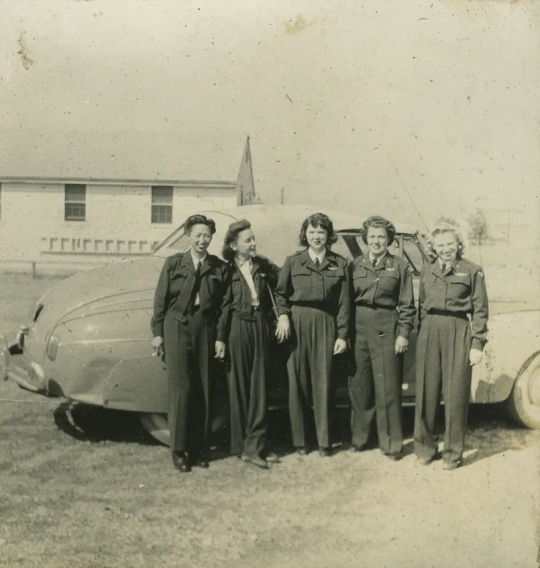
Lee (far left) served in the WASPs during World War II. Courtesy of Texas Woman's University Collection
Lee was such a good storyteller that Chang closed her eyes and felt the wind and the weightlessness and heard the engine and smelled the trees in the air aloft. They fell back on the grass and stared up at the darkening sky, waiting for the first star to flicker.
Lee told Chang that no other Asian American woman had a pilot’s license in the United States. She was going to be the first.
Lee counted the minutes until she could get back in an airplane, with the wind in her face and the lulling rumble of the engine to soothe her. She loved the speed, the rhythmic, percussive thump of the engine, the rush of air surrounded by the silent expanse of sky. Lee experienced a new kind of solitude. Away from her family and the tight quarters of a home filled with younger siblings, an elevator operator job where she had to try to be invisible, she was alone without any expectations or judgments. It didn’t matter that she was of Chinese descent. No one could see her race; no one could see her gender. In the sky, she wasn’t Chinese or American, man or woman, visible or invisible. She was just herself. In the sky, she felt limitless.
Lee refused to be tied to a home and children when there were more exciting things to do. She saw how conformity ruled women’s lives, offering a suffocating security in return. Women moved from their fathers’ homes to their husbands’, where their sons would have more power than they ever would. For most women, groomed to deny their own capabilities, to distrust themselves and defer to men, the decision to fly was fraught with fears, not only of flying but also of being independent. In an age when women were encouraged to stay grounded, Lee’s desire to fly was the ultimate expression of individuality. A husband might insist she give up flying, and that was something she would never do.

Lee reviews her performance after a session in a Link trainer. Public domain via Wikimedia Commons
If Lee could convince Greenwood and the CCBA to accept her into the next class of students training to go to China, she would sign the pledge without hesitation. To fly against the Japanese invaders would be the ultimate experience and worthy of any sacrifice. She’d die in battle fighting the enemy without any regrets. But the Chinese Flying Club, like all the related programs across the country, didn’t allow women. Lee decided that needed to change. There were few opportunities for a Chinese woman already. If she wasn’t admitted to Greenwood’s flying school, her future options were not just limited, they were unthinkable.
‗‗‗‗‗‗‗‗‗‗‗‗‗‗‗‗‗‗‗‗‗‗‗‗‗‗‗‗‗‗‗‗‗‗‗‗‗‗‗‗‗‗‗‗‗‗‗‗‗‗‗‗‗‗‗‗
In August 1932, Greenwood’s first class of 15 students eagerly awaited their departure for China, still heady from newspaper interviews and farewell speeches delivered at banquets in their honor. Four of the original 19 had failed to complete the class due to physical handicaps such as colorblindness. The proud graduates ready to embark on the adventure of a lifetime posed in front of the Prince in two rows, wearing tentative smiles and looking like boys not used to being photographed. Most wore ties, a few wore crewneck sweaters over white shirts, and several wore the bomber-style zip-up jackets popular at the time. They had learned more than flying under Greenwood’s guidance; they now believed themselves to be confident young men, no longer boys, ready to fight a war and, if necessary, die for China.
While the men of the CCBA wondered if these kids would have the toughness required to survive combat, Greenwood expressed an unwavering faith in his students. In an interview with Webster A. Jones of the Oregonian, Greenwood tried to deflate the accepted belief that people of Chinese descent could not possibly be as capable as white American pilots. “Chinese make rattling good fliers,” he said. “This myth about Orientals not being able to fly is pure bunk. They are as good as Americans—or other Occidentals—in natural ability, and they are superior in a lot of ways.”
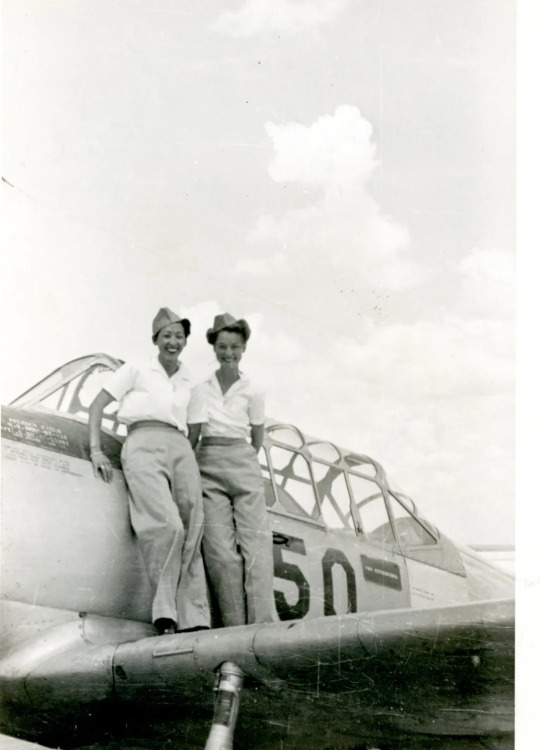
Lee (left) and Geneva Slack in 1943. Courtesy of Texas Woman's University Collection

L to R: Faith Buchner, Lee (standing on the wheel) and Grace Clark wearing “zoot suits” in 1943. Courtesy of Texas Woman's University Collection
After the graduates were photographed, Greenwood invited his other flying students to pose for a photo. Lee sauntered over to stand in front of the Prince,wearing wide khaki jodhpurs tucked into black riding boots, a polo shirt and a flight vest. Her goggles had been pushed up onto her flight cap. She took a drag from her cigarette and leaned back on the wing.
Greenwood recognized Lee’s transformation. She moved in a slow, confident stride, with a graceful swagger. Over the summer, she had made rapid progress and would soon fly solo. In a few short months, she had come into her own, and in doing so, had become something completely unique. Greenwood understood her need to be first, to compete with the boys and the girls, too. He smiled and nodded toward her as the camera shutter snapped.
Lee was as talented as any of the male fliers, but the CCBA had not yet granted permission. Since the Chinese elders and businessmen supporting the school paid all the training expenses for the students, they had to be convinced that girls were worth the investment. Greenwood’s latest argument, that the grant to train 36 students had not stipulated they be boys, proved incorrect. The contract called for “young men.” He would have to convince them that Lee was a crack pilot worthy of their financial investment. She had to pass her flying test to receive her license first, but that wasn’t going to be any trouble for her.
Greenwood became a fierce advocate for Lee, telling the Oregonian that she had received the same training as her male counterparts and was just as capable as them, if not more so. He believed Lee would prove his long-held belief that flying involved more finesse than muscle, and that keen intelligence was more important than brute strength.
Besides helping China defend itself against the Japanese invasion and having the opportunity to fly, Lee had another reason for wanting to go to China. Her father’s children from a previous marriage—her half-siblings—as well as her aunts, uncles and cousins still lived in the village where her father had grown up. This could be her chance to fulfill her dream of visiting her father’s homeland.

Ferrying trainees being briefed in the Ready Room. Lee appears at the center of the back row. Courtesy of Texas Woman's University Collection
On October 24, 1932, Lee passed the rigorous Department of Commerce pilot examination. Having also accumulated 50 flying hours, half of which were solo, Lee was granted a private pilot’s license. The document described her as a 5-foot-3, 117-pound woman. On November 1, the Oregon Journal reported on Lee’s achievement with the headline “Portland Elevator Girl Masters Flying and Gets License.” The reporter wrote, “The fifth floor of the H. Liebes & Co. [department store] was not high enough for Hazel Lee, 20, elevator operator there, so she got up early mornings to learn to fly an airplane. … Miss Lee took an airplane ride a year ago, got interested, and now that she can fly, she plans someday to go to China and interest women there in aviation.”
Lee was, in fact, the first Chinese American woman in the U.S., not just in Oregon, to earn a pilot’s license. (Katherine Sui Fun Cheung, born in China in 1904, earned her pilot’s license a few months before Lee and was the first woman of Chinese descent to do so in the U.S.; she later became a naturalized citizen.) Over the next decade, Lee would fly planes in both China and the U.S., becoming one of just two Chinese Americans accepted into the Women Airforce Service Pilots (WASP) during World War II. She died at age 32 on November 25, 1944, two days after her plane collided with another aircraft and burst into flames. “Of the 1,102 women who [flew] in the WASP program, 38 died in service,” notes the Federal Aviation Administration. “Lee was the last.”
Adapted from American Flygirl by Susan Tate Ankeny. Published by Kensington Publishing Corp. Copyright © 2024 by Susan Tate Ankeny. All rights reserved.
#Hazel Ying Lee#Women Airforce Service Pilots#WWII#American Flygirl#Susan Tate Ankeny#Smithsonian magazine#April 2024#long post#Youtube
7 notes
·
View notes
Text
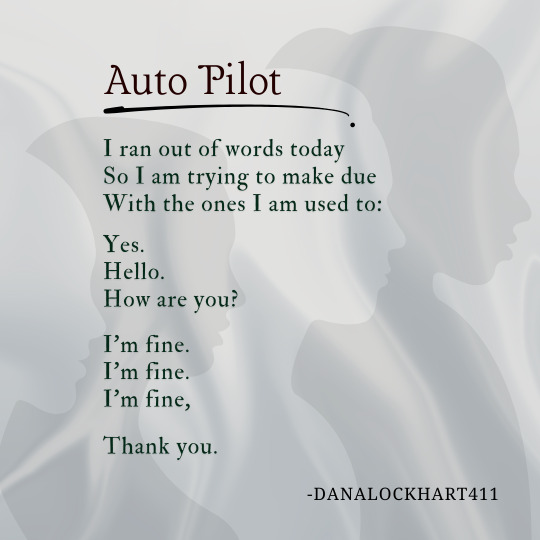
I'm fine.
#poetry#spilled ink#mental health#i'm fine#quotes#poets corner#customer service hell#auto pilot#women poets#contemporary poetry#mental health awareness#i'm okay
7 notes
·
View notes
Photo

Elizabeth L. Gardner (1921 – December 22, 2011) One of the first American female military pilots and member of the WASPS ( Women Airforce Service Pilots), having trained with Lieutenant Col. Paul Tibbets. She's seen here sitting in the pilot's seat of a Martin B-26 Marauder, which she flew expertly during WWII along with aircraft that towed aerial targets.
After the war, Miss Gardner worked as a test pilot and with General Textile Mills to design and implement aircraft parachutes. She participated in at least two test flights with the experimental chute in December 1945. During both tests, she was forced to bail out of the aircraft when the parachute became tangled in the test aircraft. During the second incident, the aircraft entered a dive when its elevators were jammed by the parachute; Miss Gardner managed to escape from the cockpit and was only 500 feet from the ground when her own parachute opened.
In 2009, WASP pilots were awarded a Congressional Gold Medal through a unit citation.
The heroic Miss Gardner passed away in December 2011 in Manhattan, New York at the age of 90.
#elizabeth gardner#wasp pilot#women air force service pilot#wwii#wwii pilot#hero#military#wwii watches#wwii timepiece#watches#timepiece#military watches#horology#Congressional Gold Medal#WWII History
83 notes
·
View notes
Text

Revisiting the character designs I did for my barchelor thesis (part 1/3). The older version is bellow the cut. I tried to stay as close as possible to the original designs, as I still think they work very well...
Anyway, meet Peter, a silver-tongued ghost punished to work as a bartender in his after-life.

#my art#digital art#illustration#original character#original art#character design#after the midnight club#that was the tittle of my thesis#I developed three characters for an animated series pilot#peter here would be our very relutant protagonist#in a kind of slice of life/fantasy#that parodies the isekai genre#bc the idea of regular joe dies goes to magical world just to end up stuck on costumer service once again is very hysterical#even more so when this fricking guy procedes to stay completely unbothered not interested in adventure whatsoever#he only wants to find a way to get out of work and maybe get ghost-unionized
8 notes
·
View notes
Text
The Regional at Best album is basically a cryptid.
#twenty one pilots#I've known about it being missing from streaming services#but i just checked Anazon and it's not there either
56 notes
·
View notes
Text
in November when we have historically celebrated a genocide in this country every year around this time, I would very much appreciate it if you would divert a little bit of the funds that you might have spent on your big family dinner gathering and donate to this program which is an unconditional guaranteed income for Native mothers for the first three years of their lives in Seattle. This is a revolutionary program and we need to throw every single possible dollar that we can at it please. also please make sure you explore their website which has vast resources and follow and support other organizations they partner with and also the individual advocates who are making this happen.
Native American Heritage Month was designated to be the month of November by President George H.W. Bush in 1990.
source
(i didn’t realize that.)
This is a compelling spotlight on The Nest program from Hummingbird Family Services. showcases a personal story of a participant and then talks shop with Camie Goldhammer, executive director. It also talks about resistance to the program by austerity-minded conservatives. We need to show them this is important to us.
#duwamish territory#indigenous women#native american heritage month#guaranteed basic income pilot#and it’s working#the nest program#salish sea#hummingbird family services
11 notes
·
View notes